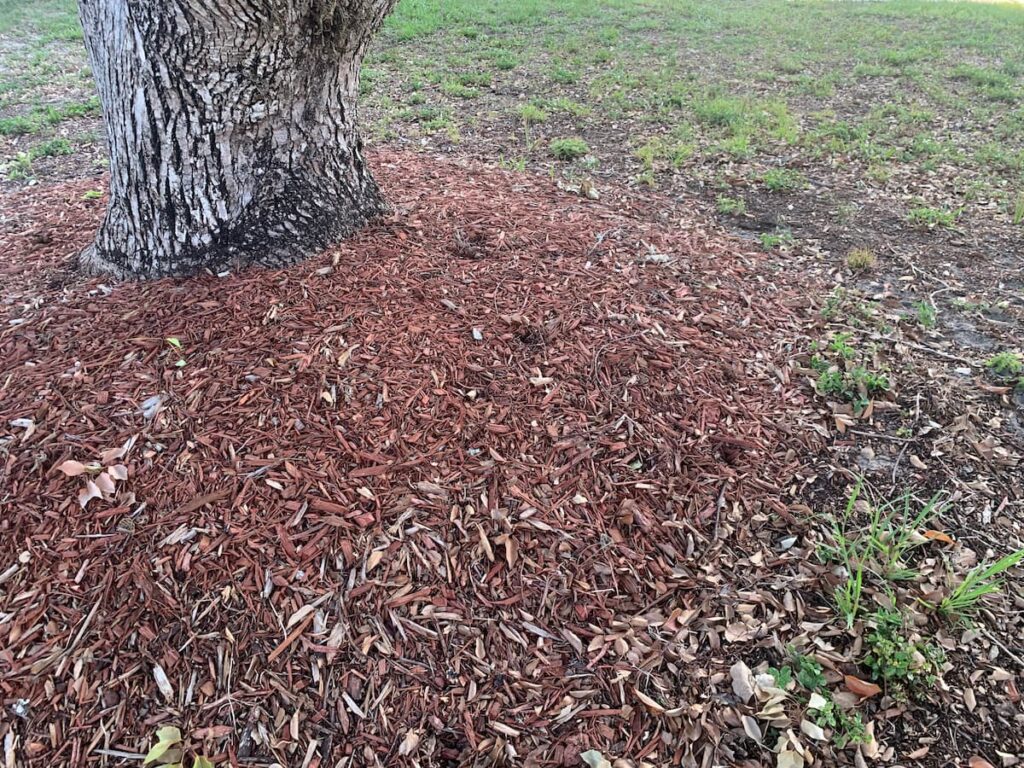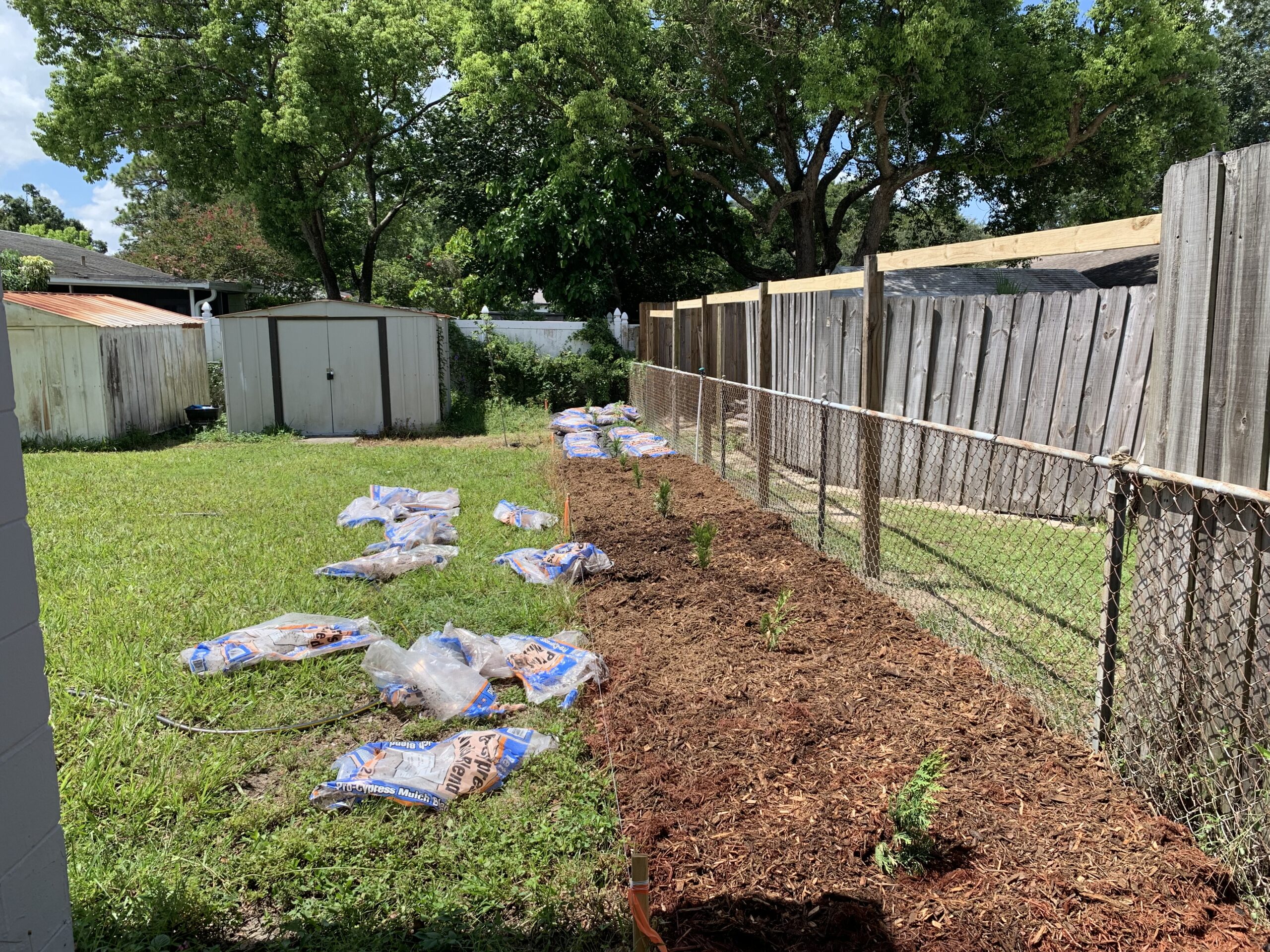Many of us make mulching mistakes, including me. And it’s no surprise. I’ve been using mulch in my gardening and landscaping efforts since I was a kid. I bought my first bag of mulch when I was 11 years old and tended a garden at my grandmother’s house. I even was allowed by my family’s landlord to create a small porch-side garden at our rental duplex where I grew up into my teens.
You better believe I used mulch on that little patch of land. Mulch helps tamp down weeds, retains moisture in the soil around the plants’ roots, and gives the little plot of gardening paradise a more aesthetically pleasing polish.
But I wasn’t born into this world knowing how to mulch. I also made my own fair share of mulching mistakes – some of which I committed even in my first years of landscaping my own home in my 30s. I want to share four mulch mistakes I’ve made and how I suggest for you to avoid making them, too.
One Of The Biggest Mulching Mistakes: Using Fabric Liner
One of the biggest mulching mistakes I made when I bought my home in my mid-30s. I thought I’d prevent weed growth in the hedges by lining the beds with fabric liner. Don’t get me wrong – using fabric liner certainly made a lot of sense at the time. I figured laying a barrier down in the hedges would be just the thing I’d need to do to stop weeds from sprouting up all around the shrubs and flowering plants. Putting mulch on top would cover the fabric and make my beds twice as protected from weeds as before.
Gosh, was I wrong!
What ended up happening was roots still sprouted up under the fabric, often poking through where the plants I wanted to grow emerged from the liner. They left behind a trail of rhizomes, or underground-running roots that I couldn’t remove because of the liner covering them. Or, perhaps even worse yet, weeds would pop up through the liner altogether. Oh, and guess what else happened? The weed roots grew into the liner, becoming inextricably enmeshed in the fabric.
I still have some of this liner in parts of the yard and am removing it whenever I redo a bed – and let me add, that liner is a mess to work with when changing out plants. It gets in the way and makes it hard to dig holes for new plants. It also prevents water from evenly filtering into the soil around the plants I want to keep.
I’ve learned the hard way if there’s a place for fabric liner in the landscape, it’s certainly not in my hedges.

A Bad Mulching Mistake: Piling Mulch Too High
I always thought the thicker a layer of mulch, the better. After all, the goal is to keep the weeds out, right? Well, too much of anything can be a bad thing, including mulch.
Now, you can lay mulch as thick as you want in areas where you don’t have any plants growing. There are swaths of beds in my landscape that have no plants at all, and I’ve got the mulch layered 6” to even 8” deep in spots.
But when it comes to mulching in and around plants, it’s a different story. Too much mulch around plants can suffocate roots and trunks while making it harder for water to get down into the root systems. Mulch is most beneficial when it’s layered thick enough to help prevent weed growth and help retain moisture in the soil underneath without being so thick that it smothers plants and root systems, or even causes plant disease.
So how thick should mulch be?
Well, when it comes to mulching planting beds, mulch should usually be somewhere between 1” and 4” thick – 1” to 2” thick for finer mulch and 3” to 4” thick for thicker types of mulch, like pine bark.
The Mulching Mistake Of Mulching Mistakes: Making Mulch Volcanoes
I think sharing this mistake dovetails well with the previous tip, but it’s actually its own type of mulch mistake in my book. Mulch volcanoes, those tall pyramidal piles of mulch you may sometimes see around the base of a tree, are their very own type of mulching fail – and a common one, I might add.
I don’t know who built the first mulch pyramid. But whoever it was must’ve inspired others to follow suit. Before we knew it, we had legions of homeowners, lawn care companies, and others who decided building piles of mulch around the base of the tree must be the way to do it.
When I went on my first mulching forays at my grandmother’s house when I was an adolescent, I thought it looked pretty to pile the mulch really high around the bases of a couple trees near my little garden patch Grandma let me have.
Well, I eventually learned that mulch volcanoes are not the way to go – and for sooooooooo many reasons.
Mulch volcanoes can lead to disease, decay, and even death to the tree. It can also promote the tree to send roots into the mulch, causing the tree to dry out.
And think about this: it costs more money to buy enough mulch to build a two-foot-thick ring of mulch around your trees.

So how much mulch should be placed around the base of a tree?
A 2” layer of mulch on top of the soil around your tree is ideal. However, there’s a big but here: the mulch should not be touching the trunk of the tree.
Let me say it again a little louder for the folks behind you: mulch should not touch the trunk of your tree. Trees whose trunks are in contact with mulch are more susceptible to insect infestations and disease.
Pull the mulch back away from the trunk and expose the tree’s trunk flare or root flare – the parts of the trunk that taper toward the surrounding ground.
Never let mulch pile up against the trunk of a tree, and never cover a tree’s trunk flare or root flare!
Innocent Mulching Mistake: Using Free and Cheap Mulch
It’s human instinct – or at least consumer instinct – to look for deals when shopping. That certainly applies to buying mulch. But they say you usually get what you pay for, and when it comes to paying for mulch you want to make sure you’re getting the best you can get.
Now, you’re probably wondering to yourself why it matters what kind of mulch you’re buying. “Mulch is mulch is mulch, right?” Ah, wrong…
I’ve picked up free mulch before and have made many runs to the garden center during their springtime mulch sales. But in doing this I’ve learned there’s a range of qualities when it comes to mulch. Some mulch is really good, and some can only lead to more harm than good in your garden or landscape.
Many times, free mulch is offered by cities or other types of municipalities. It’s always offered with good intentions, but it doesn’t necessarily mean this free mulch is going to help your garden. Unless you know what’s in that free mulch, you could end up with a bunch of unpleasant surprises – broken bits of glass and other debris, pieces of lumber waste, and potentially a bunch of weed seeds interspersed in the mulch.
Ditto for cheap mulches you may buy for discount prices at the big-box store or local grocer. Unless you know what’s in those bags of mulch, you may get hardwood and other undesirable fillers that can promote termites, mold growth, or other problems you don’t want in your yard.
